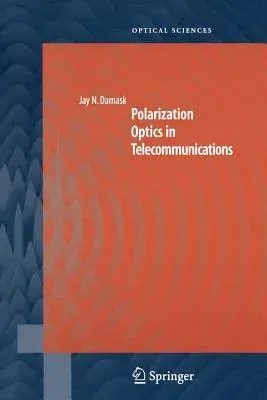Jay N Damask
(Author)Polarization Optics in TelecommunicationsPaperback, 19 November 2010

Qty
1
Turbo
Ships in 2 - 3 days
In Stock
Free Delivery
Cash on Delivery
15 Days
Free Returns
Secure Checkout
Part of Series
Springer Optical Sciences
Part of Series
Springer Series in Optical Sciences
Print Length
522 pages
Language
English
Publisher
Springer
Date Published
19 Nov 2010
ISBN-10
1441919767
ISBN-13
9781441919762
Description
Product Details
Author:
Book Format:
Paperback
Country of Origin:
NL
Date Published:
19 November 2010
Dimensions:
23.39 x
15.6 x
2.77 cm
ISBN-10:
1441919767
ISBN-13:
9781441919762
Language:
English
Location:
New York, NY
Pages:
522
Publisher:
Weight:
748.43 gm

